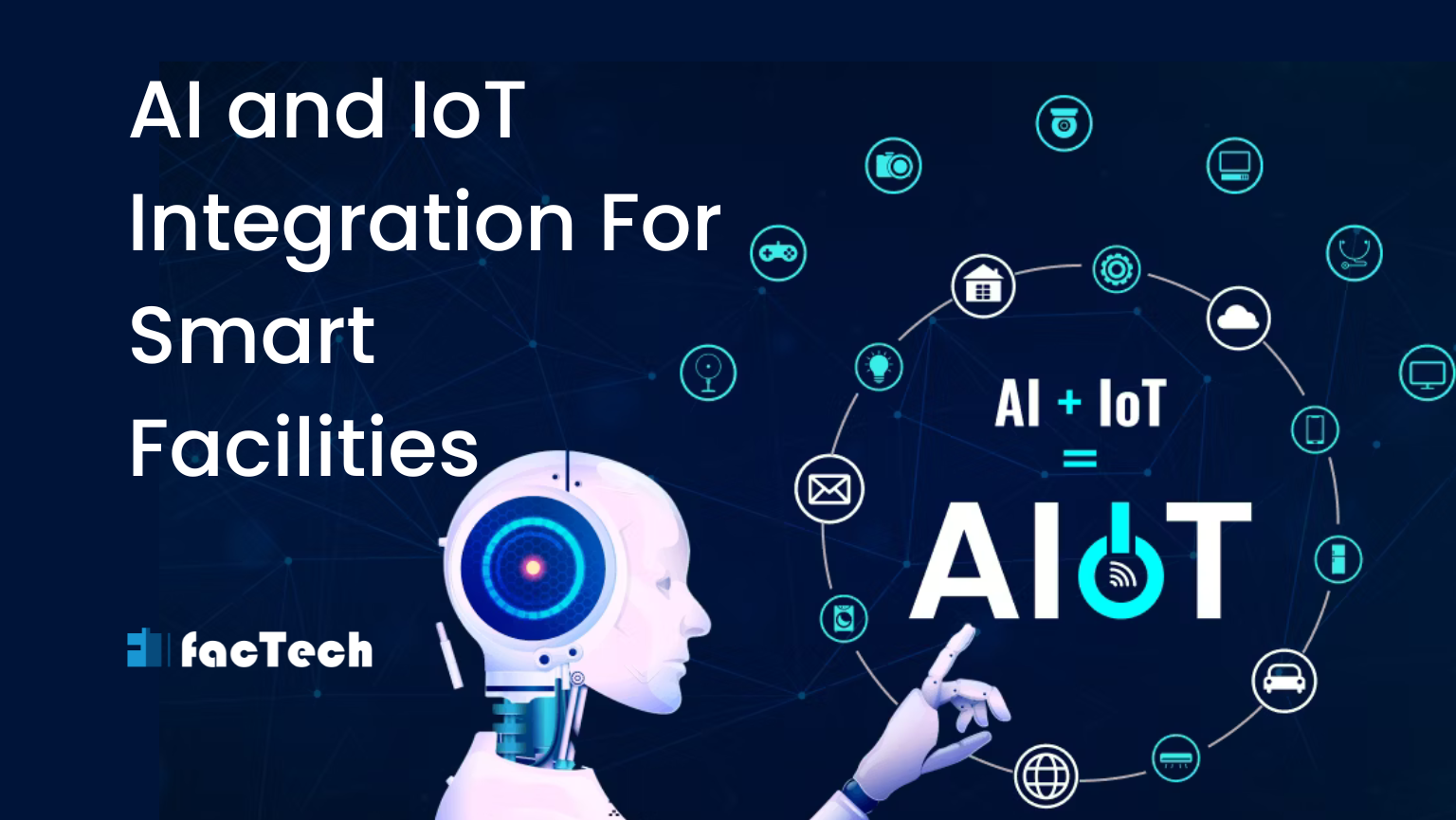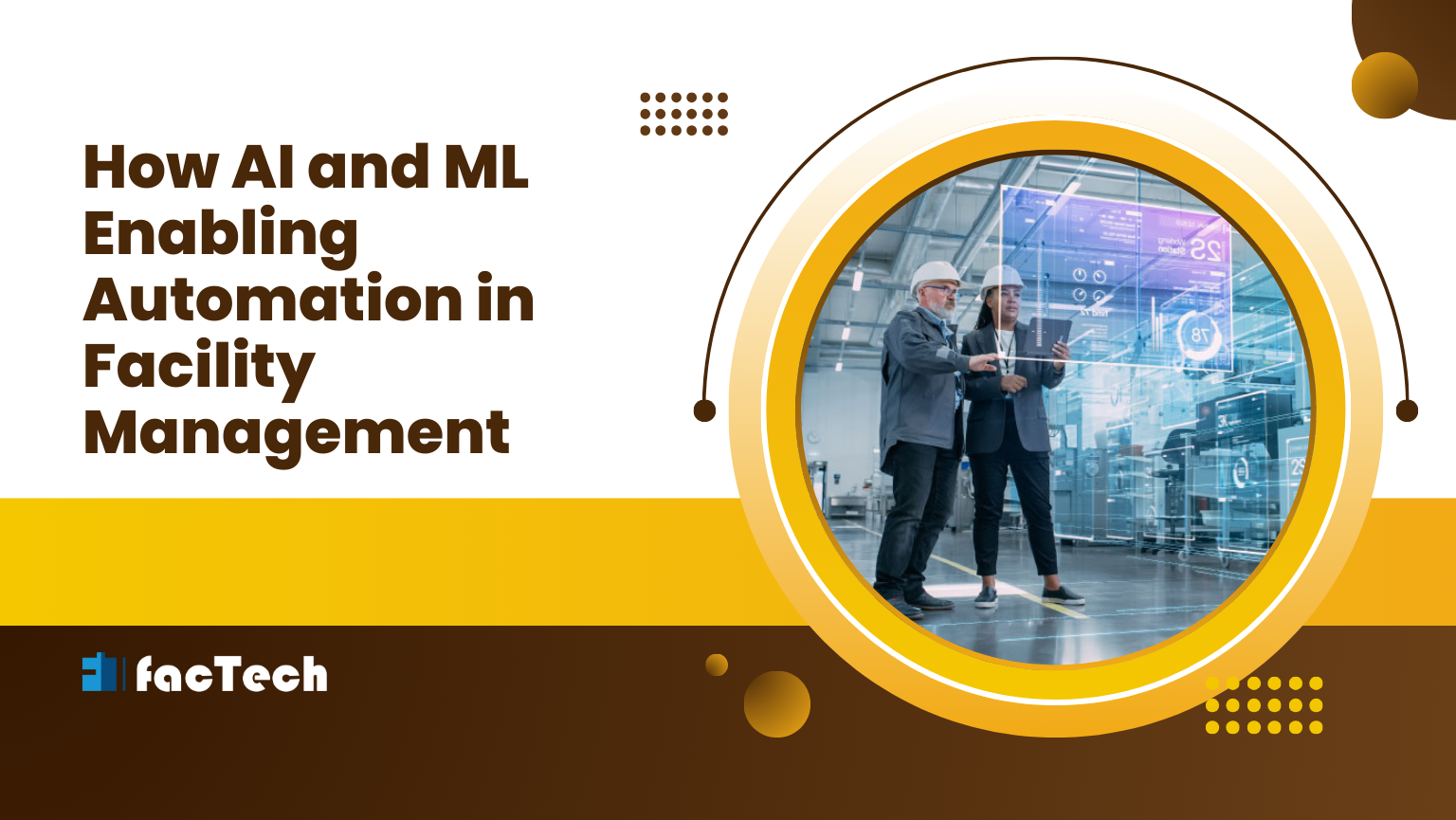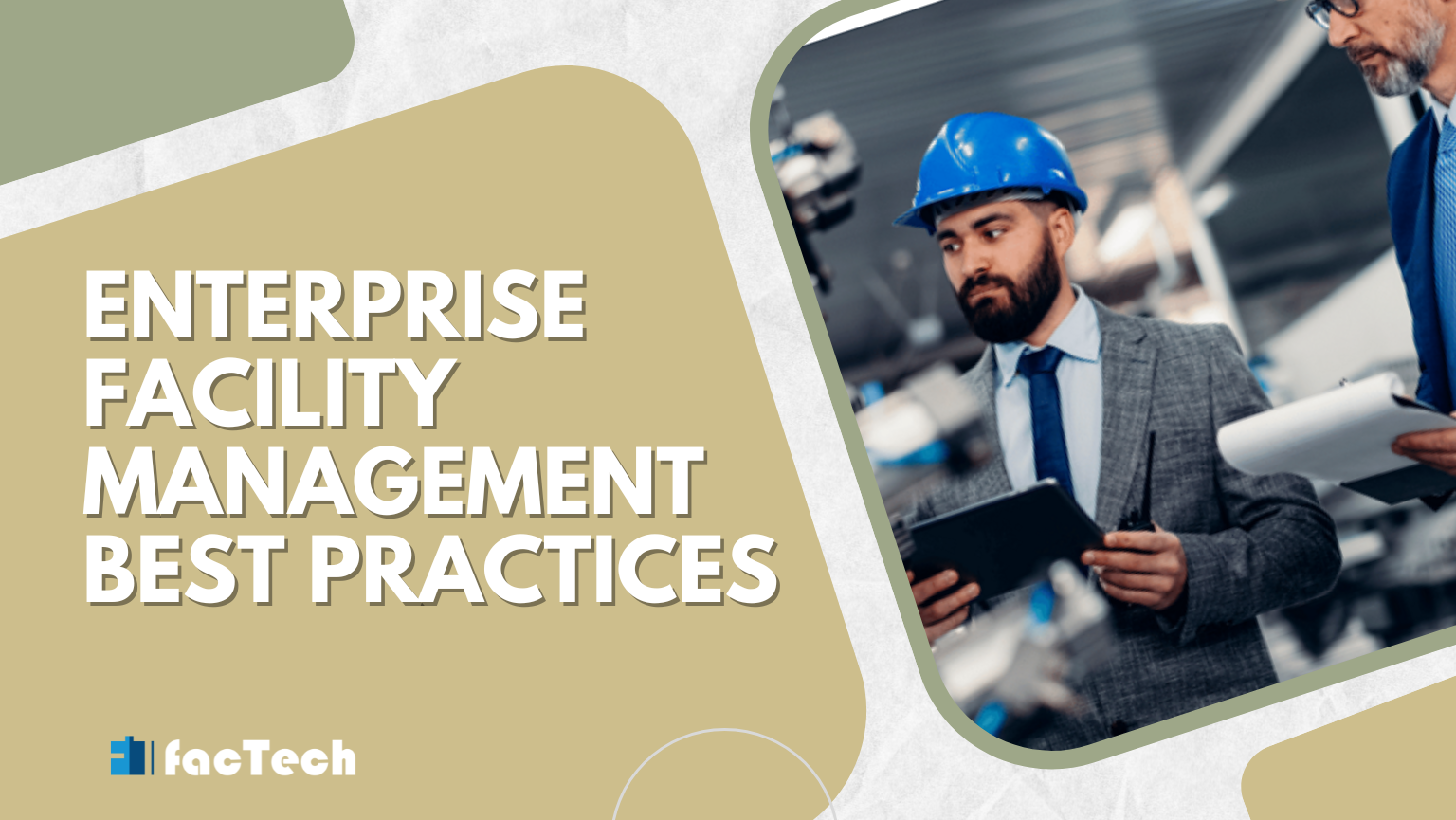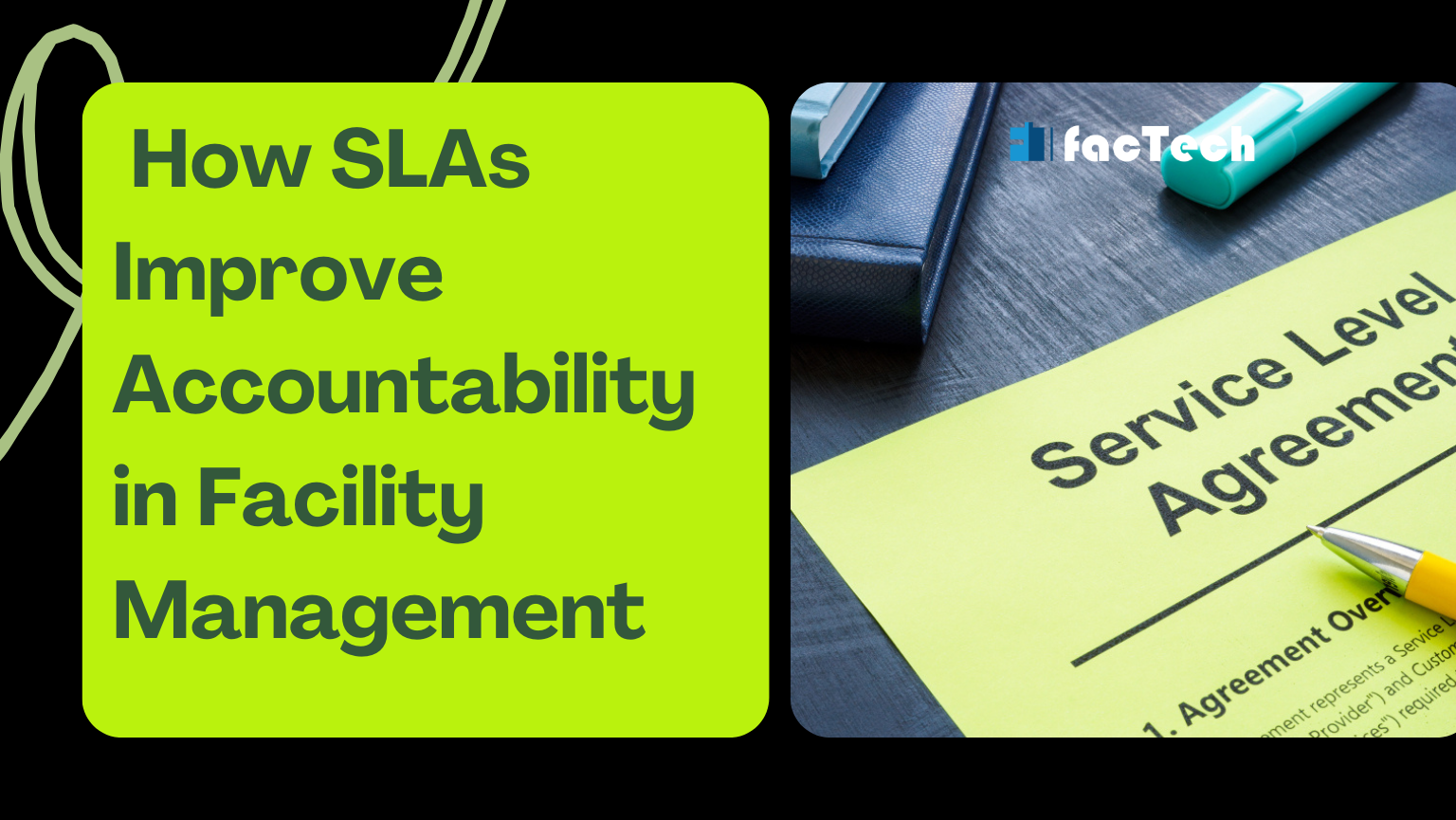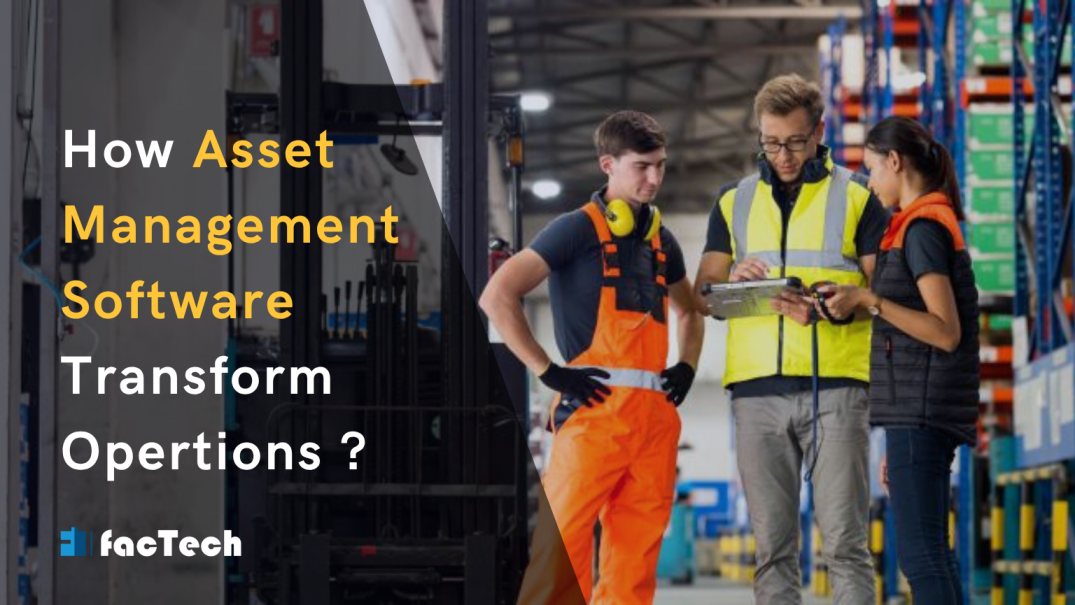AI and IoT Integration For Smart Facilities
Our approach to facility management is changing dramatically. Smart buildings are becoming a potent answer, driven by the changing needs of tenants and the growing expectations on facilities management. Smart buildings provide a number of advantages such as improved visibility, lower expenses, and easier operations by utilizing the combined strength of artificial intelligence (AI) and the Internet of Things (IoT) in facility management system.

Power of Integrated System
A smart building’s core is made up of a potent mix of technologies:
IoT sensors: Serving as the building’s eyes and ears, these tiny gadgets gather information on a range of topics, including temperature, light levels, occupancy, and equipment performance.
Artificial Intelligence: The enormous volume of data gathered by Internet of Things (IoT) sensors is analyzed by artificial intelligence (AI), which finds patterns, forecasts trends, and produces useful insights.
Automation: By using sensor data and AI analysis to automate repetitive chores, facility managers may focus on more strategic work.
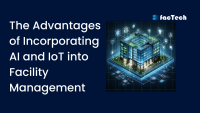
The Advantages of Incorporating AI and IoT into Facility Management
An intriguing new frontier of possibilities is presented by the combination of artificial intelligence (AI) and the Internet of Things (IoT) in facilities management. An approach to facility management that is more responsive, intelligent, and linked is brought about by this integration. Here are a few of the main advantages:
Effective Energy Consumption
AI systems can analyze IoT sensor data to spot trends in energy consumption and adapt systems for best efficiency. Dynamic control of heating or cooling can be accomplished, for instance, using sensors detecting occupancy levels.
Also, read How IoT and AI are Transforming Chiller Plant Operations
Enhanced Maintenance Predictive Value
IoT devices can monitor equipment condition and project when it will break when coupled with artificial intelligence-driven analytics. Faster completion of maintenance made possible by this helps to reduce downtime and costs.
Views of Space Use
IoT sensors tracking facility use and AI analyzing the data helps facility managers better manage space by knowing whether building areas are busy or underused.
Improved Safety
Powered by artificial intelligence, IoT security solutions include anomaly detection, facial recognition, and autonomous threat response, hence enhancing security. This guarantees rapid identification and handling of any unusual activity.
Real-time Monitoring of Assets
Assets having Internet of Things sensors can be tracked in real time. AI may then handle this information to improve asset lifetime management, reduce theft, and maximize asset use.
Automated Service Request Systems
Integrated chatbots and AI-powered ticketing systems let real-time service request processing be achieved. When an IoT device detects a problem, an artificial intelligence system could automatically generate a service ticket, therefore speeding response times.
Minimizing Costs
Combining IoT and artificial intelligence increases general efficiency, which can lead to long-term cost savings. Reduced energy use, better asset use, and predictive maintenance could all help to define a better bottom line.
Making Choices Based on Facts
Given access to a wealth of data, facility managers may make better decisions. By means of data analysis, artificial intelligence can generate insights applicable for application, therefore ensuring that decisions are supported by comprehensive information.
Looking After Potential Security Errors
One of the biggest fears is the possibility of linked devices creating security weaknesses. The growth of IoT devices shapes the potential points of access for attackers. Strong cybersecurity policies, regular software upgrades, and a security reaction plan are absolutely vital in order to guard against possible intrusions.
Problems with Operability
It could be challenging to guarantee smooth connectivity between IoT devices and artificial intelligence systems developed by companies. Choosing open platforms and standards helps several technologies to be integrated more easily.
Manual Touch in Balance: Automation
Certain aspects of facility management still require human involvement even if automation could boost output. For simple service questions, for instance, AI-powered chatbots can address; more complex issues can call for human help. Finding a balance is crucial so that technology supports workers instead of replacing them.”
Consequences of Cost
The initial outlay required to combine IoT with artificial intelligence can be really large. Though the long-term benefits usually exceed the costs, facility managers must be strategic in ensuring that the technology they invest in fits with their operational needs and generates a meaningful return on investment.
Overwhelming Information
IoT devices create enormous volumes of data. Facility managers could get overwhelmed without effective artificial intelligence algorithms to interpret and draw conclusions from this data. Crucially, good data management mechanisms must be in place.

Employ the Smart Facility Management System With FacTech Integrated Software
The emergence of smart buildings marks a historic change in facility management, and Factech’s Facility Management System leads this revolution. Factech enables facility managers to go beyond conventional limits by deftly combining cutting-edge IoT and artificial intelligence technology. By means of automated maintenance scheduling and proactive issue identification, this strong synergy unlocks simplified operations, so reducing operational expenses and so limiting disruptive downtime. Moreover, real-time data insights provide better visibility that enables informed decision-making and optimal resource allocation, thus improving the environment’s safety, comfort, and efficiency and so improving the occupant experiences. Factech’s complete strategy guarantees that facilities are not only maintained but also cleverly optimized for a future defined by efficiency, sustainability, and personalized experiences as smart building technology keeps accelerating. This helps companies to always be successful. Contact us for a free demo.
FAQs
Q.1 In smart buildings, how might IoT sensors and artificial intelligence cooperate?
IoT sensors compile building data (temperature, occupancy, etc.), which AI examines to identify trends and automate processes for maximum efficiency.
Q.2 What main advantages for facility management come from using IoT and artificial intelligence?
Among the advantages are better space use, reduced energy consumption, predictive maintenance enhanced by efficiency, increased security, and real-time asset monitoring.
Q: 3 What difficulties should facilities’ implementation of IoT and artificial intelligence take into account?
Ensuring compatibility between devices and systems, juggling automation with manual labor, controlling first costs, and processing vast amounts of data present, are the main challenges.
Q: 4. In Factech’s Smart Facility Management System, how might IoT and artificial intelligence find applications?
Factech’s integrated software uses IoT and artificial intelligence to simplify operations, reduce costs, improve occupant experiences by means of capabilities including automatic maintenance and preemptive issue diagnosis.
